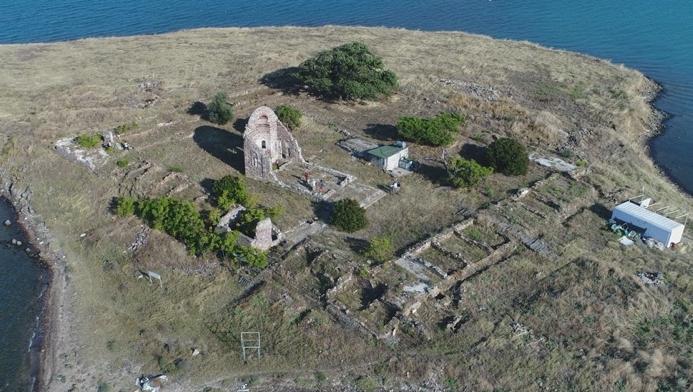
Experts have launched a study in order to map the ancient remains in the surroundings of Edremit Bay within the borders of Balıkesir and Çanakkale provinces.
The team includes academics from Mimar Sinan Fine Arts University (MSGSÜ) and Medipol University.
Hüseyin Murat Özgen from MSGSÜ’s archeology department, head of the surface research team, told Anadolu Agency that hehas been working for four years to make a cultural inventory of the gulf.
The team scanned the areas that prioritized the Burhaniye and Gömeç districts of Balıkesir and made documentations in 165 spots in the southern area of Ayvalık, Özgen said.
“The alluvial plain between the southeast coast of Edremit Bay and Madra Mountain goes down to Ayvalık. We have found that prehistoric settlements are present in this area. If we look from north to south, Madra Tepe is already a Bronze Age-era mound documented in previous findings. While Hüyücek is a Bronze-era settlement within the boundaries of Burhaniye district, the cultural layers of Bergaztepe, which is a promontory of Ören district, which we identified in 2012 through excavations, date back to the Chalcolithic period. This situation associated with the sea is very important for the region,” he said.
Özgen said that there are traces of the Bronze Age in Kistene, which is located near Kızçiftliği, and in Yeldeğirmeni Tepe, where they documented this year in the southern area of Ayvalık.
“In addition, the findings of rural Roman and Byzantine settlements and the first Turkish traces in the bay are among the new data revealing the historical topography of the region. When we approach the Ayvalık area, there are examples of Ottoman civilization and Greek civil architecture, which have been severely destroyed in the last 100 years, such as churches, chapels, monasteries and windmills. They are part of the industrial heritage,” he told.
Within the scope of the surface researches, the region of Ayvalık has been analyzed since 2016, according to Hasan Sercan Sağlam from Medipol University, who is also part of the team.
"We know that there are 73 buildings in Ayvalık including 61 chapels, 10 monasteries and two grave chapels. Today, we saw that only a small part of this building group is available in publications and a much less part is under protection. We continued our efforts to enrich that inventory," Sağlam said.
Six of the windmills are registered out of a total of 40 in Ayvalık and Cunda Island, and the locations of some of the missing windmills will be identified and certified to cover the late Ottoman period, according to Sağlam.